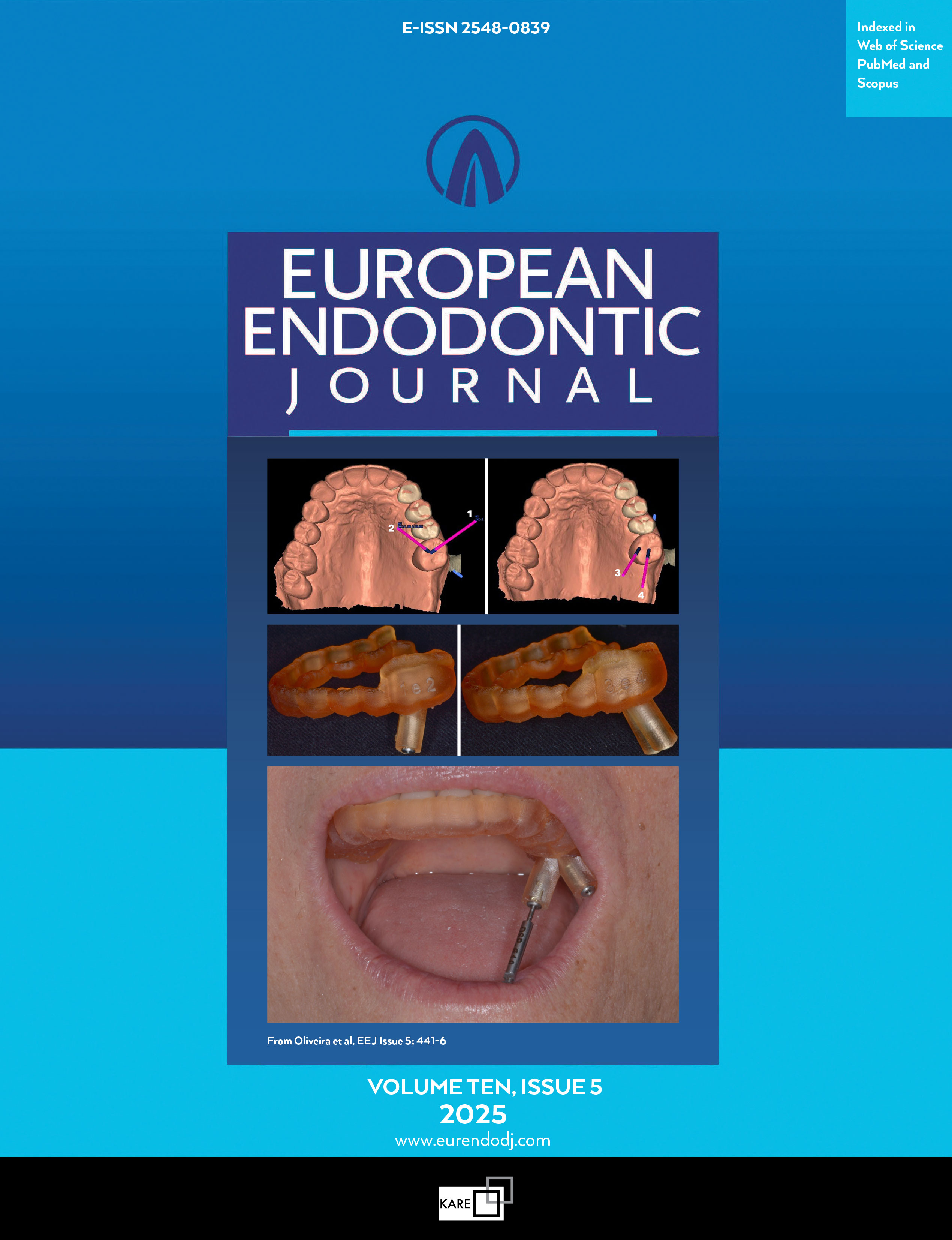Metrics
2024 IMPACT FACTOR
5 year Impact Factor
Eigenfactor Score
2024 CiteScore
Journal Citation Reports
(Clarivate 2025, JIF Rank)
Assessment of Treatment Quality Risk Factors Influencing the Radiographic Detection of Apical Periodontitis in Root-Filled Teeth: A Retrospective CBCT Analysis
Noor Hayder Fadhil1, Ahmed Hamid Ali1, Raghad Abdulrazzaq Al Hashimi1, Omar Sabri Al-qathi1, Federico Foschi21Department of Aesthetic and Restorative Dentistry College of Dentistry, University of Baghdad, Baghdad, Iraq2Department of Restorative Dentistry, Unit of Endodontology, UCL Eastman Dental Institute, University College London, London, UK
Objective: This study aimed to assess the treatment quality factors associated with the risk of radiographic detection of apical periodontitis (AP) in root-filled teeth (RFT) on CBCT images.
Methods: Two hundred eighty-five CBCT scans of patients (range 18-60, mean 35.1) years old were selected from a pool of CBCT scans which were taken from 2016-2022. Gender and age were recorded. The presence/absence of AP, unfilled canal, perforation, zipping and ledge and homogenous/nonhomogeneous root canal filling (RCF), adequate/inadequate coronal restoration and under/over filled RCF and those within 0-2 mm from the radiographic apex were recorded for RFTs. Kappa was used to assess intra-consensus reliability. Chi-square and Binary logistic regression were used to assess and predict risk factors related to the detection of AP. A significant difference was set at p<0.05.
Results: AP was present in 81.5% of RFTs. No significant difference was present in the AP prevalence in RFT between males and females, maxilla and mandible, right and left sides, RFT with adequate and inadequate coronal restoration and RFT with/without zipping and ledge and between RFT with overfilled and those with RCF end within 0-2 mm from the radiographic apex (p>0.05), respectively. Significantly higher AP prevalence was present in RFT with unfilled canal, perforations, non-homogenous and underfilled RCF (p<0.05), respec-tively. The odds of AP detection were 2.02, 5.5, 2 and 1.98 times higher in RFT with unfilled canal, perforations, non-homogenous and underfilled RCF, respectively. Intra-consensus reliability was (0.98, 0.95, 0.85, 0.81, 0.88, 0.85 and 0.92) for AP, unfilled canal, perforation, zipping and ledge, homogeneity of RCF, coronal restoration and length of RCF, respectively.
Conclusion: The vast majority of teeth with previous root fillings presented with AP. AP detection risk was significantly higher in root-filled teeth with perforation, non-homogeneous, and underfilled root canal filling. Other factors do not influence the radiographic detection of AP in CBCT images.
Manuscript Language: English
(608 downloaded)


